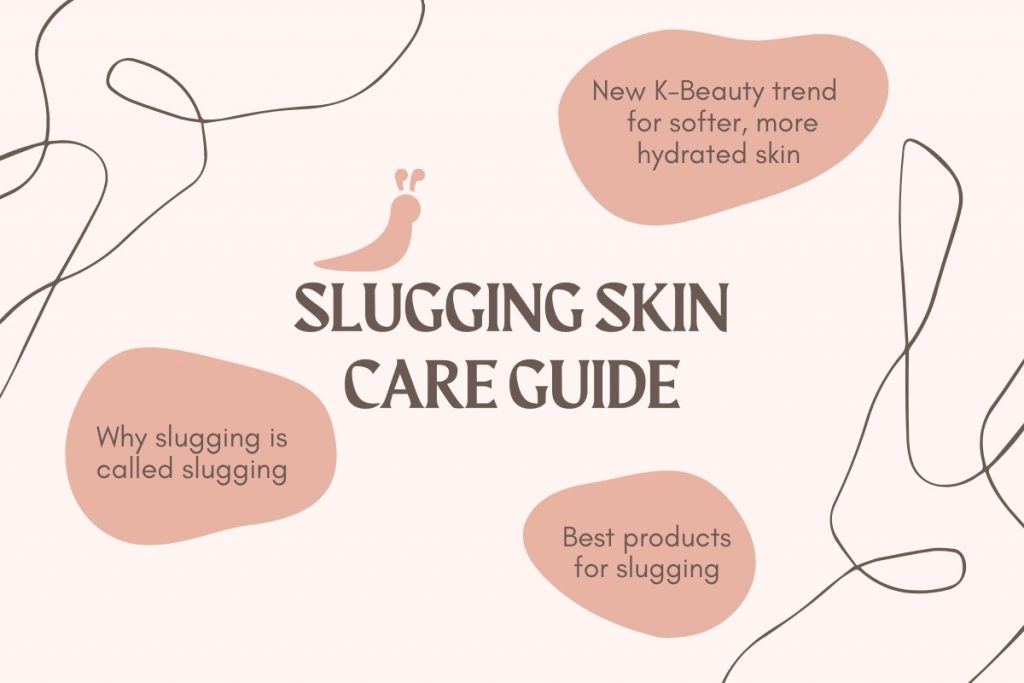Estimated reading time: 3 minutes
What is slugging?
K-Beauty has given us many skin care and beauty trends like the 10-step skin care routine and gradient lips. The latest much-talked about K-Beauty skin care trend is “slugging,” which involves creating a protective barrier over skin with petroleum jelly or a petrolatum-containing product. Leaving this protective layer on your face overnight seals in moisture, preventing transepidermal water loss, so you wake up to plump and hydrated skin the morning after.
The thick albeit slimy barrier is why this technique is called “slugging” – it makes your skin look shiny and slimy like a slug, As the molecules of petroleum jelly are too big for skin to absorb, the occlusive moisturizer stays on the skin’s surface and locks in moisture while also protecting skin from external irritants. These conditions promote the skin’s healing process. Those with irritated or sensitized skin due to over-exfoliation or use of strong active ingredients would appreciate the benefits of slugging, as it helps repair damaged skin and facilitate skin healing.
How to slug your skin
Step 1. Cleansing: Since slugging requires applying a layer of product on your face to seal in moisture, your skin needs to be as clean as possible. Make sure to remove all traces of grime and makeup to avoid breakouts.
Step 2. Moisturizing: To lock in moisture, there must be moisture present in your skin to begin with. Apply a light water-based moisturizer with humectants such as hyaluronic acids for hydration, and avoid using a heavy, oil-based moisturizer.
Step 3. Slugging: Apply a thick layer of petroleum jelly or other occlusive moisturizer on face. This thick barrier traps moisture in skin and prevents transepidermal water loss.
Step 4. Removing: In the morning, carefully remove the product from face and avoid tugging skin.
Slugging alternatives for acne-prone skin
If you’re prone to clogged pores and breakouts, consider swapping the petrolatum-based product for an overnight mask. The texture of a sleeping mask is often thick but not as rich as petroleum jelly. Some masks may contain hydrating and barrier-repairing ingredients such as hyaluronic acid, making them a great alternative. Thanks to the thick consistency, the mask helps prevent moisture loss, and your skin gains numerous other benefits from the nourishing ingredients.
Abib’s Rice Probiotics Overnight Mask Barrier Jelly contains lactobacillus derived from rice ferment and rice bran ferment, probiotic ingredients that balance the skin’s microbiome. Rice bran extracts are also known for skin-conditioning effects and high antioxidant content. This jelly-textured mask won’t absorb fully, creating a barrier over skin that prevents water loss while refining skin texture.
LANEIGE’s Cica Sleeping Mask improves skin condition with numerous calming ingredients including asiaticoside and madecassic acid, which are active ingredients derived from cica leaves that promote wound healing and calm irritated skin. In addition, it contains tea tree leaf oil, which soothes inflamed skin and controls sebum production, and shea butter, an excellent moisturizer that also helps fade dark spots and heal damaged skin.
Slugging is worth a try whether you use the original petroleum jelly method or opt for a less heavy product to create the thick barrier over skin. There are plenty of different sleeping masks to suit your skin needs, from moisturizing to skin microbiome-restoring formulas. Choose a mask that addresses your skin concerns, and get the soft, youthful-looking skin you deserve!
(Visited 792 times, 4 visits today)
Source by www.yesstyle.com
